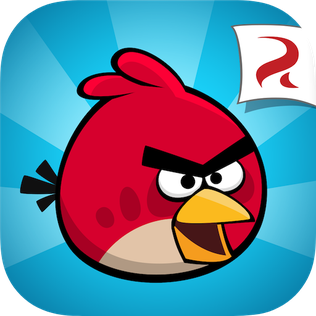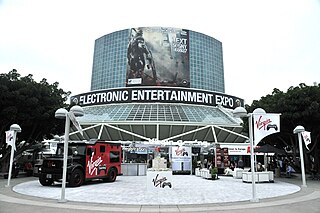History

The history of the video game industry in Finland began in 1979, when a chess-game for the Telmac was published. [11]
1979–1989: Heroes and amateurs
In early 1980s, computer game development in Finland was a pure hobby. Commodore was the most popular home computer. Source codes, usually in BASIC, were distributed on pages of home computing magazines such as MikroBitti. MikroBitti paid an award of 500-1000 FIM for "Program of the month". [12] Nintendo was selling consoles, but Finnish developers were not interested in consoles, partially because the licence fees were too high for amateurs. [13]
First ever video game made in Finland, a chess-game for Telmac had been published in 1979. [11] Larger scale game publishing started in 1984, when AmerSoft (software branch of Amer conglomerate) published four games for Commodore devices: Mehulinja, Myyräjahti, Herkkusuu and Raharuhtimas. The games' user interface was in Finnish, and there were no plans to market them internationally. In addition to AmerSoft, TrioSoft and Teknopiste sold games. In addition to Commodore, games were published for ZX Spectrum, Spectravideo computers and MSX. [13]
Two developers from the early years were particularly famous: Stavros Fasoulas and Jukka Tapanimäki. [13] [14]
1990–1999: Demoscene and the first game studios
In 1990s the more complicated platforms, Amiga and PC, were taking over the status of Commodore. Game development for them needed a team instead of solo hero. [15]
Demoscene brings developers together
Emerging Demoscene brought developers together. An important event has been the Assembly, organised since 1992. Assembly is the world's largest gathering of demo programmers. [16] The Assembly was a gathering of amateurs, who created short demonstrations to show off their programming skills. Pirates was an important factor in development of the demoscene: people who wanted to get games for free, learned how to break the copy protection. The different cracker groups were competing in this, and to get fame they added their own introduction to the cracked games. The intro development and pirates started gradually to develop their own paths, and the visual quality of the intros became the subject of competition. According to Jussi Laakkonen, the coordinator of the Assembly, an important factor in emerging demoscene were the parents who bought their children home computers, not game consoles, because with a computer you can program your own intros and other demos. [17]
First game studios
The first Finnish video game enterprises, Terramarque and Bloodhouse, started in 1993. In 1995 they merged to form Housemarque. Both Terramarque and Bloodhouse were video game developers for Amiga, but the new company, Housemarque, targeted the evolving PC game market. [18]
Samuli Syvähuoko started a company called Remedy Entertainment in his parents' garage with people he knew from the demoscene. Their first rally game was a success, they moved to a real office and started to develop a third person shooting game which later got the name Max Payne. [19]
The 1996 top-down racing game for DOS, Fatal Fumes, was the first project of a small Finnish group composed of four people. The team was branded as Mediamond for their subsequent projects. [20]
First steps of mobile phone games
A variant of arcade game Snake was preloaded on Nokia mobile phones. Graphics consisted of black squares, and it had 4 directions. It was programmed in 1997 by Taneli Armanto, a design engineer in Nokia and introduced on the Nokia 6110. [21] A few other games were included in the Nokia phones, but Snake was the only success.
2000–2004: Max Payne and mobile game studios
First mobile game studios
When Nokia introduced a primitive mobile web called WAP, some games were developed for that environment. WAP technology was supposed to bring internet to mobile devices, but the usability was poor and data transfer was expensive. Internet enthusiasm brought investor money for mobile game developers. Among the first one were Springtoys, and spring off of Housemarqye, and Riot-E. International corporate giants invested 20 million euros in venture capital i in Riot-E. Within a few years, Riot-E went bankrupt. The mobile games started to look more attractive, when phones with colour displays and Java became more common. Distribution of the games still needed contracts with individual tele operators who run their own application stores. As there were no big hardware standards, each game had to be modified to several different phone types. [22]
Max Payne conquers the world
Max Payne was finally released in 2001, and it became the most sold Finnish game of the era During the first 10 years the Max Payne franchise sold over 7.5 million copies. [23]
Habbo
August 2000 saw the opening of first version of Habbo - a social networking service and online community aimed at teenagers. The service allows users to create their own Habbo character and design hotel rooms, meet new friends, chat with other players, organize parties, look after virtual pets, create and play games and complete quests. [24] Creators of the Habbo Hotel, Sampo Karjalainen and Aapo Kyrölä had earlier made an avatar application for the website of a band called mobile, and a snowballs game for marketing purposes of a tele operator. The first version of the hotel concept was called Hotelli Kultakala (Hotel Goldfish). International versions, now under name Habbo Hotel, started from United Kingdom. As largest, the new virtual world had versions in 11 languages and users from more than a hundred countries. It was free to play Habbo, but revenue was made with micropayment. Users had their own hotel rooms they could furnish with items they could order and pay with SMSes. Later the SMS payment was replaced with digital tokens. [25]
2005–2007: Digital distribution
Digital distribution was a revolution in game development. Valve launched Steam in 2003. The Steam platform is considered to be the largest digital distribution platform for PC gaming, and was estimated by Screen Digest to have 75% of the market space in October 2013. [26]
In traditional model, game developer is a subcontractor, and distribution is expensive due to costs of marketing, materials and shipping. Developer gets around 10%. In digital delivery, distribute takes only 30% share of the income. This allows Indie game developers to bring their product to the market. [27]
2008–2011: Apple takes over; Angry Birds is a hit
In 2008 revenue of video game industry in Finland was 87 million euros, and it employed more than a thousand people. [5]
Apple launched AppStore in 2008. That was the turning point of success of mobile games. Nokia tried with its own marketplace, but the user interface of their Symbian phones was inferior to Apple's iPhones. Less than 50 games were launched for N-Gage, and each of them was 5-10 euros, while in the AppStore you could buy games for less than a euro. [28]
Rovio entertainment, which had started 2003 as Relude, decided to concentrate on iPhone games only. Their big success was Angry Birds . As of July 2015, the series’ games have been downloaded more than three billion times collectively, [29] making it the most downloaded freemium game series of all time. It has been the most successful iOS app. [30]
Remedy launched Alan Wake , a successor of Max Payne, in 2010. [31] They had a contract with Microsoft, and the game was launched solely for Xbox 360. [32]
2012–: Era of free-to-play and indie games
Digital distribution encouraged small startup companies since 2011. During 2001-2014 total of 179 new game studios started, and 1,26 billion euros foreign money was invested in video game industry in Finland. After Angry Birds success, the Free-to-play games have become the most popular models. In them, the revenue comes from micropayment. Supercell launched three very popular free-to-play games: Hay Day and Clash of Clans in 2012 and Boom Beach in 2014. [33]
Supercell's revenue in 2013 was 672 million euros. Majority of its shares were sold to Japanese SoftBank and GungHo in 2013. When SoftBank increased its stake in the company, valuation of Supercell grew to US$5.5 billion. This puts Supercell to be likely the most valuable mobile game studio in the world. [34]
The revenue of video game industry core (development and game services) in 2014 was 2400 million euros. This equals 25% of revenue of ICT sector and 20% of added value of culture sector. [5]












